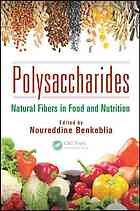

Most ebook files are in PDF format, so you can easily read them using various software such as Foxit Reader or directly on the Google Chrome browser.
Some ebook files are released by publishers in other formats such as .awz, .mobi, .epub, .fb2, etc. You may need to install specific software to read these formats on mobile/PC, such as Calibre.
Please read the tutorial at this link: https://ebookbell.com/faq
We offer FREE conversion to the popular formats you request; however, this may take some time. Therefore, right after payment, please email us, and we will try to provide the service as quickly as possible.
For some exceptional file formats or broken links (if any), please refrain from opening any disputes. Instead, email us first, and we will try to assist within a maximum of 6 hours.
EbookBell Team

4.0
46 reviews''In a web search for 'sugar factory,' the site that most closely resembled a factory that makes sugar was a large sugar refinery and its expansion plans in New York City. It is noteworthy that despite our remarkable technological advances, we still cannot duplicate one of the most common activities of the plant kingdom--manufacturing sugar. I do not mean extracting it from plants and purifying it (making it white); that's easy. I mean building sugar molecules with carbon atoms like plants do in photosynthesis. One could argue that there are no man-made sugar factories because it is simply not cost-effective; it would be a losing proposition to compete with plants at this business. The first time I read about photosynthesis, I thought it seemed impossible that plants could take carbon dioxide and water and, using energy from the sun, produce sugar. These little sugar factories absorb carbon dioxide from the air at a concentration of about 0.04%, amid overwhelming concentrations of nitrogen and oxygen. And, when they are finished, they ''discard'' oxygen as a waste product! But they don't stop there, which is what this book is all about. If they don't use the monosaccharide products of photosynthesis directly, they hook them together to form disaccharides, oligosaccharides, and polysaccharides. The types of linkages between monosaccharides make for an incredible diversity of structure and function. Cellulose, starch, fructan, and B-glucan, are some of the products of the plant and fungal species described in this book''--
''In a web search for 'sugar factory,' the site that most closely resembled a factory that makes sugar was a large sugar refinery and its expansion plans in New York City. It is noteworthy that despite our remarkable technological advances, we still cannot duplicate one of the most common activities of the plant kingdom--manufacturing sugar. I do not mean extracting it from plants and purifying it (making it white); that's easy. I mean building sugar molecules with carbon atoms like plants do in photosynthesis. One could argue that there are no man-made sugar factories because it is simply not cost-effective; it would be a losing proposition to compete with plants at this business. The first time I read about photosynthesis, I thought it seemed impossible that plants could take carbon dioxide and water and, using energy from the sun, produce sugar. These little sugar factories absorb carbon dioxide from the air at a concentration of about 0.04%, amid overwhelming concentrations of nitrogen and oxygen. And, when they are finished, they ''discard'' oxygen as a waste product! But they don't stop there, which is what this book is all about. If they don't use the monosaccharide products of photosynthesis directly, they hook them together to form disaccharides, oligosaccharides, and polysaccharides. The types of linkages between monosaccharides make for an incredible diversity of structure and function. Cellulose, starch, fructan, and B-glucan, are some of the products of the plant and fungal species described in this book''